We’re scrap gold buyers, a family run business located in Auckland. If you have old gold and jewellery to sell do you know how much you can get? Gold prices tend to increase in times of uncertainty and during times of inflation. The prices for scrap gold are calculated by the carat of gold by the weight in grams, factoring in the international spot rates.

Selling gold with us is simple and Gold Smart offers a friendly and professional service that customers rave about. Don’t take our word for it, find out for yourself and call us today.
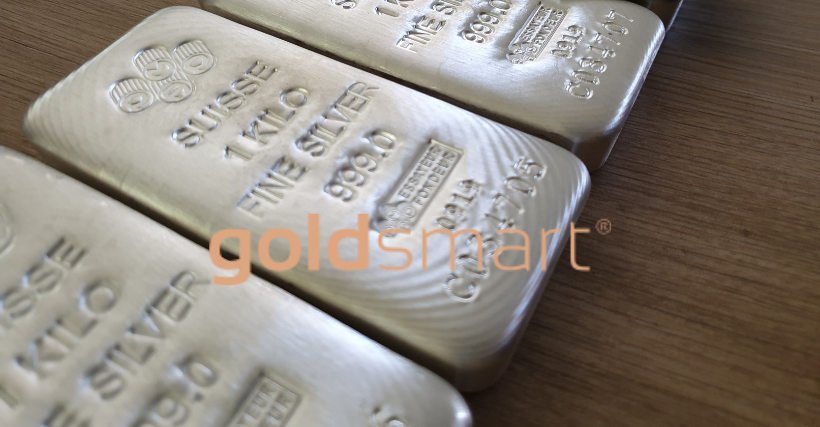
Silver offers a Kiwi a very interesting choice for investing or seeking value protection in precious metals. Unlike gold or palladium, silver tends to be a very active and fluctuating metal on the market both because it has a high demand under industrial conditions as well as for collection and finance. The metallic gray metal has long been considered the lower price cousin of the precious metal family, but it is also the area where one can make significant gains quickly on fast buying and selling. While silver itself hasn’t appreciated much over its value position in the last 10 years, each day and week the metal moves considerably, sometimes as much as 30 percent. And those swings can offer a serious opportunity for quick buying and selling to make gains. That said, one has to be on their game because the value of silver can drop just as fast as well.
Ancient Silver
As an ancient relic, silver offers one of the oldest and most common forms of valuable metalware and coin currency that existed in ancient times. Silver was produced in much greater number and quantity than gold, so a larger amount of it has survived the ages to still be available today. And, many silver coins are worth far more value in terms of their numismatic quality than for the metal worth alone. Greek and Roman silver coins represent the build of ancient coins still available, but a good number of other cultures and nations are still available as well, some being older than those two aforementioned foundations of Western civilization.
Historical Silver
A good amount of historical silver is also still being exchanged. The Spanish and the various dynasties in the Middle East produced a tremendous amount of silver coinage that has made its way around the world. And the Chinese were huge consumers of silver as well. Once the Portuguese were able to establish trading posts in Macau and similar, Spanish silver started to make its way to China who had a serious demand for the metal, basing their own currency on silver at the time. Many argue the introduction of silver to China through trade ultimately created serious economic problems for the region, but the effect was in place as soon as the Portuguese were able to establish a foothold. Even after the British took control of the area Spanish silver was still circulating quite a bit and still represents some notable finds now and then, particularly in the Philippines and Southeast Asia.
By the end of the 19th century Australia was dominating the landscape regionally with all the precious metals they were digging up and smelting at what became the Perth Mint, the country’s oldest mint and still operating today. The gold and silver coming out of that region starting in the 1890s were so pure they ultimately set international standards for Europe and England in the 1950s decades later.
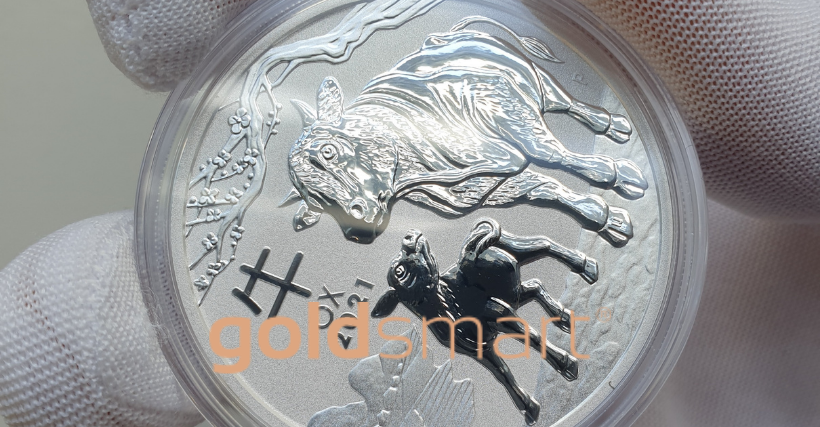
New Zealand Coins and Bars
Many pre-1946 New Zealand coins also contain 50 percent silver, making them valuable to hold or acquire if one can get them for a realistic price. Bullion products such as 1kg bars, 1oz coins, silver eagles, silver maples, New Zealand silver ingots, and many others tend to provide a better choice as these are far closer to 100 percent silver content and worth far more. Customers have regularly been buying silver to speculate on the price rises and when to sell. However, it is very hard to predict where things may be heading as silver moves up and down just about every day.
Selling Online Comes With a Lot of Risks
While on the one hand selling silver online is less risky than other precious metals due to the price involved when selling small quantities, that doesn’t mean that silver doesn’t have its own share of fraud. Some very advanced and convincing fraud operations are now in play, shilling hundreds of bids and pitches to sellers online. Oftentimes, using auction sites or similar where people think they are scoring a big sales deal, these buys frequently turn out to be a problem and a scam, especially when crossing borders and selling internationally. Folks have to remember: when selling on auction sites once the silver is shipped and expecting payment, it’s pretty much gone if something goes wrong. Further, there are lots of added costs for auction fees, shipping and taxes as well. If someone lands a decent sale online, it probably ends up costing more than if the silver was simply sold in New Zealand to a physical store when everything is added up mathematically. If online is how you want to sell, then definitely consider Gold Smart as a much safer alternative. Every sale and silver product is handled and transferred via a secured courier. The process is so easy, many customers often mention why they didn’t think of using Gold Smart sooner as their Kiwi silver buyer source.
Ideas for Family-Building Capacity and Generational Gifting
Silver has long been a bastion of wealth-building in families over time, which is the most common trend of buying precious metal. Because the price point is lower than gold, it can be bought more often, even monthly to build up stock and inventory. That in turn can be exchanged or traded up to larger pieces of similar worth to preserve storage space as needed. As the inventory in a personal holding builds, wealth and stability also increase accordingly. This provides a family or household an alternative security if it’s ever needed, or people can hand it down to the next generation as an inheritance which is often very much appreciated by young generations. More than one family has handed down a sizable silver collection or jewellery as a wedding gift as well or to celebrate the birth of a new child.
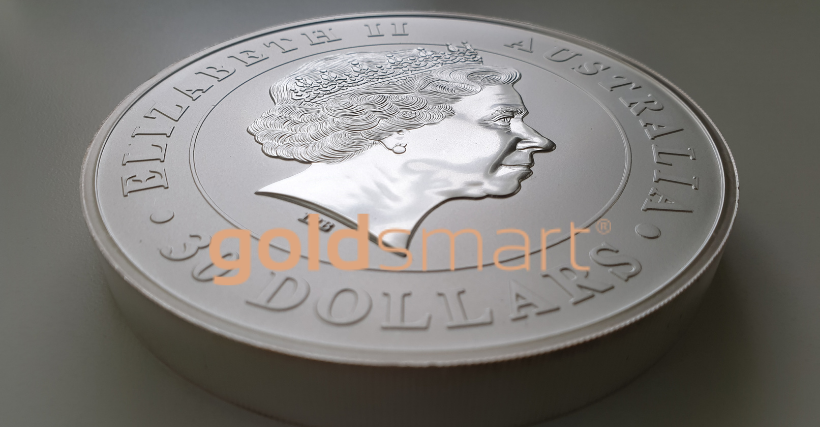
Finding a Silver Buyer
There are plenty of venues that will buy precious metals, including silver. That doesn’t mean they are the best place to go to. Many are geared toward maximizing what they can make in a profit and minimizing what they buy and give to personal sellers of silver like yourself. Others assume that personal sellers are hard up for ready cash and will take any price offered in a desperate need to sell right away. That makes it a challenge for a consumer to find a respectable place to sell their silver when it’s time to liquidate.
The first step and principle is not to panic and not to rush the sale. Window-shop and find out your options. It will pay off far more in the long run when you do make your sale. Second, have a good idea of what the current market price is for your sale. You’re not going to get that for your silver, but it should be in a reasonable range. If you’re selling for half, you’re making a mistake. Third, focus on silver buyers who have a long-standing reputation for good business in New Zealand. It’s possible to find them and protect your own financial interests.
When it is time to sell silver, a good, reliable buyer is key. Gold Smart can provide that security. There’s no need to fuss with unknown parties or risks. We take care of the entire process, providing and evaluating your silver expertly and liquidating it to ready cash for your needs or big life projects at fair prices. In fact, many who work with Gold Smart have realized the value they received is so good, they should have started working with Gold Smart earlier. That’s the kind of quality service we provide as one of New Zealand’s best silver buyers.
Gold Smart was established according to the philosophy to provide the best service and rates to their clients. With the goal that this high-level of service and confidence will continue to establish them as the market leaders.
Gold Smart is not a franchise (nor a pawn shop), and thus do not have to bear additional costs that this represents, which usually means a lower rates for customers due to high overheads and advertising costs.
Free and Transparent Appraisal
As professional gold buyers they will be happy to evaluate your gold, silver, palladium and platinum items at no cost so that you have an idea of the amount you can get. There is no obligation to sell to them and you can compare with other alternatives if you desire. .
Their evaluation methods are transparent and you will learn the steps of the process and what influences prices.
Honesty and competence
The team was selected for their absolute honesty, integrity, competence and knowledge, so you can trust you will be receive fair value for the items you are looking to sell.
Immediate payment
Gold Smart will pay for your items immediately, issuing you a cash check or effecting payment via direct bank transfer, whatever suits your best.
Privacy
All transactions with Gold Smart are confidential and private. Transactions are carried out in our secure office so you don’t have to worry about people looking over your shoulder trying to see what you have and/or are selling.
Too good to be true?
Check out our testimonials page. Their customers speak for the points mentioned above. In the end of the day, you have 2 choices: shop around for prices, finding people that don’t take your items seriously and that usually offer low prices, or save your precious time by coming to Gold Smart direct today.
At Gold Smart customers often bring in items that were gifted to them, and they are not sure whether the jewellery is genuine gold.
There are a few methods you can use to determine if your jewellery is real gold or not. Do keep in mind that these methods are not 100% conclusive, but can be interesting and fun to try.
VISUAL INSPECTION
Look carefully at your piece and look for the gold stamp or hall mark engraved in the gold, which is often inside a ring or near the clasp on a chain. The stamp can show the degree of fineness or the carat. Another way to check is to easily look for discolouration or colour shift, especially around the edges and other areas that have experienced friction and rubbed away.
USING A MAGNET
Gold is non-magnetic, but many of the metals that are used in gold-plated items are. If your jewellery is attracted to a magnet, then it is likely to be plated. However, even if it is not attracted to the magnet, it is still not necessarily real, but this is a good starting point.
USE A SCALE
Use a scale and a piece of real gold jewellery of the same size as the one you are testing. Gold is very heavy, so if two pieces of similar size and shape weigh exactly the same amount or close, chances are your piece is made of real gold.
All these methods can be useful to see if your gold jewellery is real gold or fake. However, these tests will not give you conclusive answers or tell you guaranteed quality and carat of your gold piece.
If you are looking to sell your gold items, an easy option is to bring your jewellery to us here at Gold Smart. It is very easy to make an appointment with us: all you have to do is give us a call on 0800 465 376 or send us a message through our website.
You can bring the items you are not so sure about, together with the ones you are certain. We will test all your items and let you know on the spot whether you have real or “fake gold”, and price according to its purity.
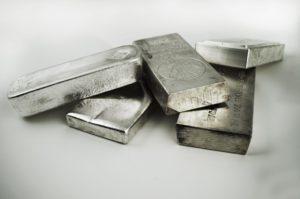
Among precious metals, platinum is probably one of the odder selections out there. Most people are familiar with gold and silver. Some have even heard of palladium. But platinum sits behind the stage lights, regularly ticking up in value and demand, and it is regularly in high demand as an industrial resource as well.
A Bit of Background
Platinum is its own element; on the chemical charts it’s most recognizable as “Pt.” While the metal has a high density, like other metals, it can be shaped and formed. And that makes platinum useful and valuable for tool-making. Even better and unlike iron and steel, platinum doesn’t corrode very easily or oxidize. No surprise, platinum as a metal is in high demand for environment applications that deal with a lot of moisture and oxidation chemicals that steel would fall apart in very quickly. That makes platinum valuable and able to command increasing demand as technology continues need more and more of the metal. For example, platinum is regularly used on boats given their constant exposure to sea water and salt. Other uses include medical implants which require both strength as well as sterility to work properly. To add to its rarity, platinum is actually harder to find than other precious metals, which are already rare. Application-wise, platinum performs far stronger softer metals like gold.
Platinum was found in quantities early, and the Spanish admired the metal quite a bit. By the middle ages and Renaissance, platinum considered a “royal” metal desired by monarchs, which only increased its value further. Fast-forward to modern times, platinum has skyrocketed in value for decades because of its overwhelming industrial demand. The realization of how useful platinum could be made it worth 800 percent more than gold in the 1920s, and by the jet age it was a commonly used material for jet engines and high-temperature weapon propulsion because it could withstand extreme heats. 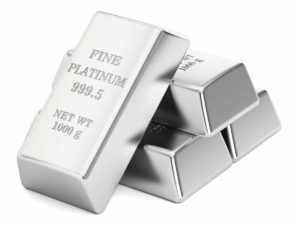
Selling Platinum
Platinum selling works very similar to any other precious metal. A personal seller needs to have a bit of understanding what’s going on with the given metal market before getting started. Like gold or silver, platinum has an investment value as well as an industrial use noted above. However, unlike gold and silver, platinum tends to decrease in value when the economic markets start struggling. Where gold and silver have often been used as a hedge to stock markets and similar, platinum works in the same direction as business strength because it is fundamentally a business resource. That means when times are good platinum will skyrocket in demand as businesses that use it are consuming more. When times are hard, markets are cutting back and reducing production, and platinum value drops. It can and has swung wildly in relation to gold and does always not move in the same direction in terms of metal value.
A whopping 92 percent of platinum goes directly to industrial use versus personal consumption such as jewellery or collection coins from mints. In comparison, silver realizes a 55 percent usage for industrial purpose and gold is far lower at only 11 percent. So, clearly, platinum’s value is very much tied to the business world and manufacturing versus investment speculation such as what is seen with gold. These numbers are not firm; they fluctuate from year to year. However, platinum has never dropped off its high industrial commitment levels in the 20th century. And if you drive a car, you’re using platinum heavily. How? Connected to your exhaust is what is known as a catalytic converter. This component is an essential part in reducing the amount of pollution that comes from your car’s engine and the combustion process. When metal prices started going gangbusters in the 2000s a new crime started popping up as a result – stolen catalytic converters. They were being practically sawed off cars in the house driveway at night by thieves, all to resell the platinum inside.
The best types of platinum to sell will include the following:
- Platinum coins – most often issued by government mints, these coins are pressed and stamped by official agencies, including the amount of material and quality of the platinum included in the coin. These are probably some of the best forms of platinum to sell as they sale value is the lease disputed. Sometimes platinum coins will be part of jewellery, usually as medallion pieces. When combined with other metals, the coin can be a bit problematic to sell on its own, but if the jewellery is scrap, broken and similar, the platinum coin can be separated and sold on its own.
- Platinum bars – The most common form of platinum when it is sold in bulk for industrial purposes, some platinum bars also make their way into the investment and collection world and personal holdings. Platinum bars generally have the same ease at selling as government-issued coins when the bars are issued by a government mint. However, platinum bars also have a frequent distribution from private smelters as well. So, they tend to get tested with far more scrutiny as a result.
- Platinum jewellery – Rings, bracelets, necklaces and earrings all can be made from platinum. While not as common as gold and silver, platinum jewellery is often used for pieces that need greater strength for everyday wear. Men’s jewellery, for example frequently utilizes platinum because it can handle greater wear without bending, chipping or breaking. Precious metal buying has always been a good way to clear out old jewellery pieces that don’t work anymore or are out of style, and platinum jewellery is no exception.
- Lab Equipment – Gold Smart buys all types of platinum labware including platinum crucibles, moulds, dishes, tweezers, spatulas, stirring rods, inoculating loops, platinum cones, triangles, electrodes, tongs, trays, lids and any other platinum scrap labware. Labware tends to be another common collection of the metal in product again because platinum performs so well with heat applications as well as withstanding otherwise corrosive chemical exposures.
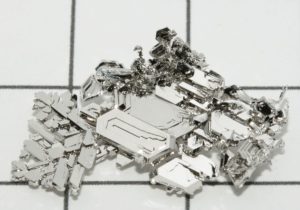
Working With a Platinum Buyer
Obviously, a personal seller needs to work with a precious metal buyer who actually works with and buys platinum. There are lots of metal buyers out there, but that doesn’t mean they all automatically take in platinum. And those who do might just only be doing it on the side simply to resell it to an actual regular buyer. That doesn’t bode well for the personal seller. Without knowing which business really wants platinum on a regular basis, it can be hard to find a respectable buyer as well as obtain a fair price. Many folks get frustrated, unable to sell something they know has value, and then they just throw in the towel and sell their platinum to the first buyer that comes along and actually offers cash for it. These desperate sales out of frustration often end up handing over platinum value for free, which is unnecessary.
At Gold Smart you can sell platinum jewellery as well as palladium jewellery, bars, coins and similar for cash at a fair second-hand precious metal price. Viable items can and usually include platinum rings, necklaces, bullion coins and similar items containing precious metals. Since platinum tends to be found more typically in jewellery, Gold Smart professional buyers are very familiar with evaluating these pieces and grading them for purchase.
The most visible platinum value reference a buyer will look for before testing the metal’s validity will be stamps or marks that include the following:
- 900 Pt (or 900 Plat), marked “900 Pt” or “900 Plat”, indicates that platinum is 90% pure.
- 950 Pt (or 950 Plat) / Pt (or Plat) marked “950 Plat” or simply “Plat” indicates that platinum is 95% pure.
Note that will jewellery platinum is often matched to precious stones. This is because platinum provides a sturdy grip for diamonds and gemstones to keep them in place. Unfortunately, when the jewellery is still embedded with stones, it cannot be easily sold. The stones need to be removed to sell the platinum as a scrap precious metal first. In these cases it may be better to find a jewellery buyer interested in vintage jewellery with complete stone sets instead.
Gold Smart provides a huge difference in experience a buyer process versus other New Zealand precious metal selling channels. We are able to provide safe and secure selling either in-person as well as online via secure courier, and all items are evaluated and marked fairly for metal purchase and consolidation. Because we handle both the purchase and aggregation of precious metals at Gold Smart, we are able to provide better market pricing versus corner store operations that cut deep into the value and reduce the cash payment available to a personal seller and customer. We also focus on a long-term relationship with our clients so there will never be a hard pressure to sell or surprise fees and charges involved. Our entire Gold Smart process is up front, transparent and stands on a well-established reputation as one of New Zealand’s best precious metal buyers to work with. So, if you have platinum potentially for sale, whether it’s a ring or a necklace or an assortment of coins and lab equipment, give us a call or email to get started. We’re always interested in precious metals for sale, no matter the size and quantity.
 Gold panning is becoming more and more popular amongst geology enthusiasts in New Zealand and all over the world. Also called simply panning, gold panning is a way to extract gold using, in most cases, few resources, low investment, simple equipment and rustic tools. The process is one of the simplest and also the oldest methods of mining gold.
Gold panning is becoming more and more popular amongst geology enthusiasts in New Zealand and all over the world. Also called simply panning, gold panning is a way to extract gold using, in most cases, few resources, low investment, simple equipment and rustic tools. The process is one of the simplest and also the oldest methods of mining gold.
The question is: can gold still be found using such an old technique? The quick answer: YES. It not only can be found but some people have become rich by doing so.
Beginner’s luck
 About a year ago, 3 year old James Hyatt used a metal detector for the first time in his life and BINGO: he found a gold pendant of the 16th century that was worth £2.5 million pounds (or NZ$4.7 million in today’s rate).
About a year ago, 3 year old James Hyatt used a metal detector for the first time in his life and BINGO: he found a gold pendant of the 16th century that was worth £2.5 million pounds (or NZ$4.7 million in today’s rate).
The boy was playing in a field with his grandfather’s metal detector when he found the “treasure”. “James got very excited when he realised he had found treasure, but he is still too young to understand the real meaning of the pendant” his father said to the Daily Mail. The boy also told how it happened: he was holding the detector when the device started to emit a sound, “beep, beep, beep.” “I was happy because we managed to find the treasure without a map equal to the pirates,” said James. The metal detector was even bigger than the child. James can be considered a lucky boy. For 15 years his grandfather tracked the soil of that region as a hobby without ever having found anything.
Why buy when you can pan your engagement ring?
 George MacIver, 53, returned to the hill where he and his fiancee, Tina Lear, met two years ago, to get the raw material for their engagement ring.
George MacIver, 53, returned to the hill where he and his fiancee, Tina Lear, met two years ago, to get the raw material for their engagement ring.
At the time they met, both panned gold in the same river during a group tour.
Three times a week for one year, MacIver trekked two hours to reach the site. In total, it took 156 trips until he got 6 grams of gold. After the melting process, the alliance weighted 4 grams.
Tina Lear, 31, said MacIver’s gesture “symbolises our relationship perfectly. We have similar interests and we became closer because of our passion for gold mining.”
 MacIver, who is a writer and photographer, said his effort of walking to the river – which was carrying a backpack of 30 kilograms in gold mining equipment – was worth it.
MacIver, who is a writer and photographer, said his effort of walking to the river – which was carrying a backpack of 30 kilograms in gold mining equipment – was worth it.
Persistence Wins the Day
It’s not just a matter of putting the pan in the water and instantly finding gold nuggets. It takes a little research to find out where the gold flows down from the hills. It is usually located in riverbeds with few shoals or where the current decreases and causes swirls.
Many beginners get disappointed with their small results. However, many have found that their activity with the pan can be rewarding all by itself. Going out for a day on the river, hearing the birds and the bubbling water that pass between the rocks can be quite a relaxing experience.
Regardless of the amount you may find, give us a call and we will provide full assistance on selling your alluvial gold. As expert gold buyers, we at Gold Smart are always looking to assist our customers in the best possible way, with transparency and fair rates in every transaction.
For thousands of years gold has been used in the creation of jewellery, art, and coins. Through time gold has been an important factor in economic policies all over the world. It is usually bought as jewellery in times of abundance or investment bullion in times of crisis, and is sold as a method to release capital.
Reasons to Sell Gold
People think of selling gold for the most varied reasons. Whether by necessity or desire, it’s a quick and easy way to unlock some money. Some of the most typical reasons why Kiwis sell gold jewellery are:
Unlocking value reserves
In times when business cash-flow is tight or one is temporarily out of work, it’s handy to know you have something valuable that can be quickly sold. Selling your gold is one of the quickest and easiest ways to unlock the gold value of your old jewellery items.
Sell because the time is right
Some people know the right time to sell gold in order to gain better profits. For instance, if you are following gold prices, you know that prices are historically really good at the moment.
Get rid of what is not needed
Some people buy jewellery, accessories or decorative items by impulse, when in reality they do not need it. They later end up not wearing the jewellery – better sold for cash than unloved in the jewellery box.
To buy something needed or desired
It’s normal for people to sell their gold to buy or pay for something special. This may be a household appliance, a new car, a house, school costs for the children, or an unexpected bill.
Regardless of your reasons, when you’re ready to sell your gold and/or silver items look for good, reputable and reliable buyers.
Gold Smart has been in business delivering high quality services and fair prices to customers for years now. If you take a look at our testimonials on our website you will see the glowing feedback from our happy customers.
Enquire today via our contact page or give us call. We will be happy to assist you selling your gold and silver items.
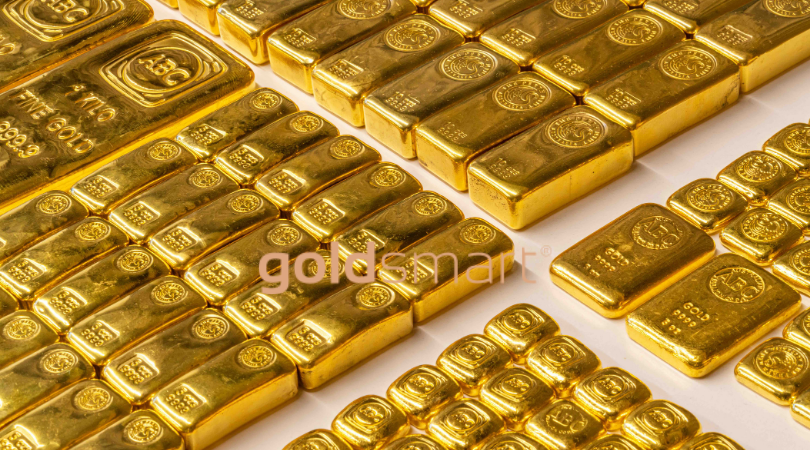
Gold prices vary considerably, depending on whom one talks to. Aside from the spot price of bullion gold, which assumes one troy ounce of 24-carat quality, there is no particular standard available as every market for the precious metal has variation. As a result, a lot of people spend a lot of time guessing where gold value might be, and then they end up surprised when they try to apply it to their personal situation and find the results are very different. This scenario has played out far more frequently in recent years thanks to the Internet and the proliferation of lots of information, not necessarily correct or applicable to the particular reader. Nonetheless, the data and conjecture sound good, reads intelligently, and people use the information to bolster personal assumptions about their assets.
Remember What Matters with Personal Gold Prices
There are two fundamental price points one should always understand that are personal, correct, and will always matter the most to the individual trying to sell personal gold. The initial value of gold is what you pay for it. If you paid $1,000 for a gold coin some years ago, that is your entry point, period. Whatever that gold might be worth in an estimate or appraisal is a guess. The gold to you is worth $1,000 because that is what you spent to buy it from your own pocket. If you are one of the lucky folks who received the gold coin free from a relative or as a prize, even better. Now it is worth $0 in terms of anything paid for. Does that mean it is worthless? Of course not. But your output to obtain that gold was nothing, which means you stand to gain the most of anyone owning a similar coin.
The second price point that matters the most is how much you sell the given gold for. If at the time, you sell the coin for $800 because that’s the most offered, then your price point is less than what you paid if it originally was $1,000. On the other hand, if you got the coin for free, you have made a whopping $800 profit, even if folks argued the coin was worth more a year before.
The point of the above two paragraphs is this: all the guides, advice, and websites in the world do not matter one wit when it comes to your actual price of gold. What does matter is how much the gold gets charged for or sells for when you act. From this perspective, gold becomes pretty simple to manage as an investment. Ideally, you buy low, hold onto gold for a high point, and sell high. It is a pretty simple investment strategy to follow. Where things get complicated, however, comes in guesswork on when to sell and when is a high price high enough? Along the same lines, if gold drops in value, will it ever return back up to a breakpoint for the individual? These additional questions are what tend to create all the additional fuss about investing in gold.
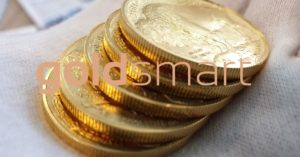
If Gold is Personal, Why Is It Always Tied to Markets?
The precious metals get tied to stock markets and economic conditions because they are usually used as a hedge or a safe harbour when those investment arenas turn sour. Gold is seen as an alternate form of value and financial strength because it is not directly connected to the very thing that does drive markets, the success of the companies that make up those markets. As a result, gold would rise in value historically when markets were not doing well. Repeatedly, gold has been a physical go-to form of wealth to preserve and protect value gains over time and ride out the storm when markets lose value. By shifting back and forth, investors avoid the dips and losses that come with a fluctuating market, in theory, and instead dive back in when things are restored and growing again. Ideally, by timing the shift back and forth, one’s investment stays on the growth side most of their portfolio exposure period.
Supply Remains Tight, But Gold Fluctuates Wildly
So, let’s re-look at why gold prices are where they are now in respect to the individual’s value who might be considering selling gold at the beginning of 2021.
After the summer started last year experts and market watchers paid close attention to the supply side of gold. The mining output has not changed much over the last few years, generally producing the same level from one year to the next. In fact, as Spring 2020 set in and social distancing became a big issue due to COVID-19, some of the operations actually slowed down and output started to drop a bit.
At the same time, available gold supply in all forms was being grabbed by individual and institution players from every direction. As government stimulus spending further weakened battered currencies by flooding markets with more cash, gold really started to stand out as a solid, disconnected asset to have that was not swayed easily by government monetary policy. That in turn drove more demand on a limited market.
Granted, a good number of folks in 2020 had seen the current window as a great opportunity to unload the gold they had kept on hand for years. Sellers were richly rewarded in all formats, from bullion gold to scrap gold jewellery being liquidated at continuously rising prices. That said, even though this push has moved new units of recycled gold back onto the market, it has been nowhere near enough to balance out the current demand. Everyone from government mints to auction sellers on private sale sites like eBay were swamped with offers and backlog orders because of the high demand by the middle of 2020.
Long-term projections for gold levels and supply returning back to normal are also unlikely. Mining is not going to suddenly boost and dump a huge amount of new supply on the market. Government central banks themselves continue to hold onto reserves to maintain needed stability if something goes haywire with market bubbles, and private buyers still outnumber private sellers. In short, the supply shortage of available gold for investing is going to continue to be pinched in 2021.
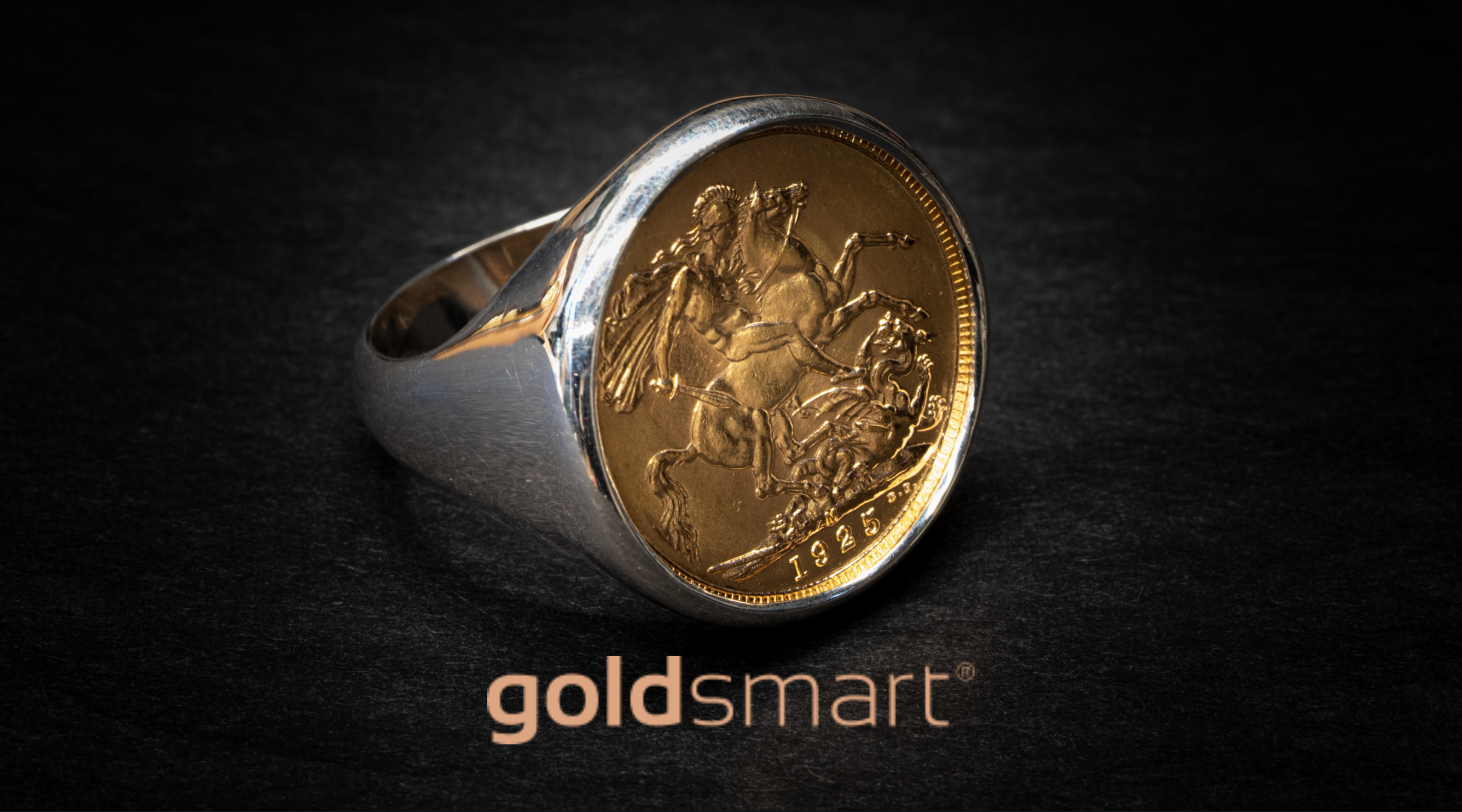
Gold Price Prediction: It Can and Will Drop
Gold in Auckland markets is not immune to losing value, however. Any investor who paid attention to what happened earlier in 2020 saw a good example of this. Like everything else, the initial shock of an economic COVID panic sent gold hurtling down in value dramatically in the middle of March only to recover itself some 10 days later. This kind of dip was driven more by emotion and general financial anxiety than anything logical or rational. Nonetheless, gold’s value was cut by almost 15 percent in that same short window, proving the precious metal could be caught up in global mob rushes like any other investment tool. Gold is not immune to panic.
As of the new year, gold is predicted to be in a mild drawback from its highpoint at the beginning of August 2020, and once again the precious metal provides its typical entry point for more positions to be added for those who want to buy in. Supply is not going to rise fast anytime soon, and the public markets just need a Halloween scare to spook everyone back into gold again, shooting the value up once more. The U.S. is already debating about implementing the third stimulus spend, and Europe continues to do the same to stabilize its overall international market. However, unlike normal trends, equities (stocks) did not fall in the winter, and cryptocurrencies drew an incredible amount of investment as well due to recent runs (Bitcoin broke $40,000 USD). That deflated money that would otherwise have pushed gold up again in the spot price.
In short, the market price for gold is mixed, and profit or loss comes back to the very two principles we discussed at the beginning of the article. If you bought gold at a much lower price some years back, you are still sitting on a very large profit that is being sustained well in the range of $1,840 USD/troy ounce. However, if one arrived at the party recently, then the predictions might look very different, maybe even reflecting minor losses if one sells their gold right now, having come off of higher points earlier in 2020. Personal perspective and commitment really matter in every case, and it’s the reason why one can’t arbitrarily apply some website’s advice or standard across the board. Gold investment is personal, specific, and unique.
Gold Smart Makes It Easy to Sell
If, however, you predict that now is your best time to sell gold given your prior buy point, and you’re concerned about losing further value waiting long, Gold Smart can help. Not only does our office provide the most competitive prices for gold resale versus the gold spot market price, Gold Smart also ensures personal sellers have the most reliable, responsive, and safe channel to sell their gold as well. No one can time the market objectively for an individual, that is a personal decision everyone who has gold to sell has to decide for himself. However, Gold Smart can make it extremely easy to sell gold quickly before the market changes further when a seller decides to take action. With a professional gold-buying team always ready to go, Gold Smart provides sellers a very effective means of managing physical gold for investment as well as liquidation. Let us know how we can help.
Like many people, if you’ve spent more than you should with gifts and parties at the end of the year and started 2012 in the red, it’s time to take a deep breath and take charge to organise your finances to a healthy position this year.
Avoiding over-indebtedness is having control over your money. This involves two paths: firstly you can increase income, for example, a pay rise or change of employment or other activity that ensures an extra income. Secondly you can evaluate monthly expenditures and sort expenses into essential or non-essential.
Organising your spending is not always an easy task. It requires discipline and monitoring. There are many tools available that can help you such as worksheets, and computer software. Simple hint: take a 12-month calendar, and begin to record all events that will happen, such as birthdays and anniversaries (e.g. Mother’s Day), in addition to current expenditure and also installments already incurred.
Putting everything on paper makes it much easier to gauge exactly how much you earn and how much you spend.
If you are a fair amount in debt you need to list all fixed bills and the delayed ones. Try to renegotiate your debts and also assess the need to change a bad debt for a better one. For example, if you are in debt with your credit card or account overdraft, opt for a more suitable line of credit with lower interest rates. Overdraft is a product intended only for emergency situations and should be used for a very short period of time.
It’s not good just paying the bills. A person who is in debt needs to cut unnecessary expenses to balance their budget. In this case, you must observe even small expenditures, such as eating out or having coffee out every day. It is important to realize that small expenses can generate a large expense at the end of the month.
If your budget is deep in the red and you see no way out ahead, the option may be to take a line of credit. Another option is the Gold Smart Way…
Who wants to have a bad credit score and not enjoy the occasional treat? Getting high-interest loans (especially from loan sharks) can make matters worse. In other words, acquire more debt to pay debt? It doesn’t sound very smart.
Don’t be stuck on the trap. If you have any unwanted gold or silver jewellery/items, today might be the day to bring it to us. You will be pleasantly surprised with our service quality, friendly staff and most important of all, our prices. Call now to make an appointment. You will be glad you did.
P.S. please download our free gold buyers guide to selling gold.
Christmas time is upon us and it’s a great time for giving and spending time with loved ones. If you are looking for extra cash these holidays, remember you may be sitting on a gold-mine in your jewellery box.
The gold prices when selling jewellery depend on the carat and weight of the items. The heavier in grams or ounces and the higher the carat, the greater the value. Jewellery that’s 18ct/750, 22ct/916 and 24ct/999 will provide the greatest gold content and therefore the most return on your items.
Examples may be necklaces made in Hong Kong by Chow Tai Fook, bracelets by Tiffany & Co., high-class jewellery from London, New York, Saudi Arabia, Dubai, Thailand, India, China and others will have higher gold percentages and therefore scrap gold value. As gold buyers it’s always interesting to hear the stories behind your favourite accessories.
If you are looking for excellent prices and fantastic service, sell jewellery to Gold Smart today.
The amount paid by Gold Smart for your jewellery depends on the gold quality and weight of your items.
Most countries require jewelers by law to hallmark or seal gold jewellery. This means that an analysis laboratory determines the quality of the piece and stamps it with an official seal to indicate purity. On the other hand, today many jewellery items come from countries that require no seal or have less than perfect standards. The quality of these parts can only be determined through scientific testing, which can be done with acid or by X-ray fluorescence.
There are two classification systems that reveal the quality of gold, the karat and purity. Below is an example of how to compare the two measures:
KARAT FINENESS GOLD PURITY PERCENTAGE
9k : 375 / 37.50%
14k: 583 / 58.33%
18k: 750 / 75.00%
22k: 917 / 91.66%
24k: 999 / 99.90%
Note that there is no “100% pure gold”. Normally the highest possible degree would be 99.99%, found only in very special items. For common jewelery, the highest grade is 24 carats, equivalent to a purity of 999 or 99.90% pure gold.
We at Gold Smart respect our customers providing a simple and transparent pricing process. Call us now for more information.
Gold does not always shines, but you wouldn’t know that from surging worldwide interest that has turned the yellow metal red-hot.
Gold has become highly prized bling, as anxious and astute buyers alike, from hedge-fund players to central bankers, flock to the “currency of fear.”
Gold’s feverish run has made a lot of people a lot of money, and though the rally has taken a breather in the last few months, there’s no shortage of flag-waving supporters who claim gold is on a march to US$2,000 and beyond. After all, gold is still well below its 1980 peak, when it was worth around US$2,300 an ounce in today’s dollars.
Certainly there are reasons to own gold in a diversified portfolio. Yet gold isn’t like a stock or a bond. It offers no income, no dividend, and no earnings. It is considered a store of value, an alternative currency that’s safe beyond reproach, but it is not cash in the bank, or even the mattress. Gold has no untapped intrinsic value; it is worth only what people are willing to pay for it. And lately, many people have been only too willing.
Original Source
http://www.marketwatch.com/story/why-gold-is-a-bad-investment-2010-11-12